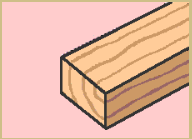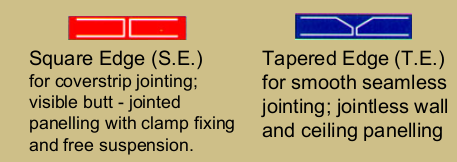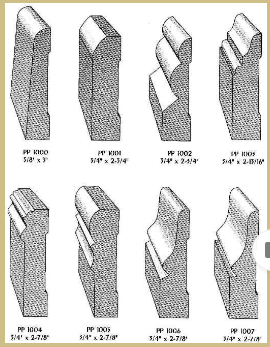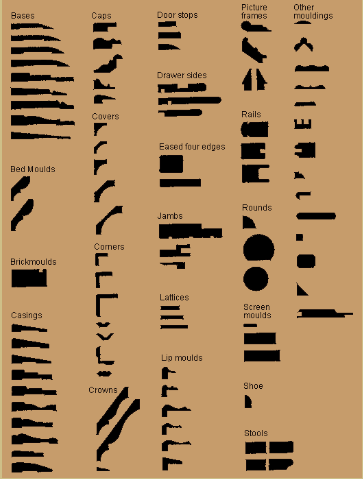ARB PART2
1/137
Earn XP
Description and Tags
woods and plastic
Name | Mastery | Learn | Test | Matching | Spaced |
|---|
No study sessions yet.
138 Terms
uses of wood in architecture
natural warmth
workability
infinite variety
flexibility
fire protection
color
Decay
Caused by the attack of fungi.
Checks
Cracks or lengthwise separation across the annual
rings of growth caused by irregular shrinkage during
drying. Checks are formed when the circumference
shrinks more than the interior section of the log.
Shakes
– These are cracks
between and parallel to the
annual rings of the growth.
Knots
– These are irregular
growths in the body of a tree
which interrupt the smooth
curve of the grain. The fibers of
the tree are turned from their
normal course and grow around
the knot at that point of the tree.
Pitchpockets
– These are
well-defined openings between
annual rings containing solid or
liquid pitch.
Wane
– This is the lack of wood
on the edge or corner of a
piece.
Warping
- Any variation with
the plane surface of the piece
caused by unequal shrinkage
of the board. There are
several forms of warp:
Crook
–a distortion of the board
in which the edge is convex or
concave longitudinal.
Bow
–a distortion of the
board in which the face is
convex or concave
longitudinal.
Cup
–a distortion of the board in
which the face is convex or
concave across the board.
Twist
–a distortion of the board
in which one corner is raised.
Plain sawing and Quartersawing
methods of sawing wood
Plainsawing
efers to lumber cut tangent to the annual rings or growth
or, in commercial practice, cut with annual rings at an angle
0° to 45°. for pleasing pattern
Quartersawing
efers to wood cut radially to the annual rings of growth
parallel to the rays or, in commercial practice, cut with the
annual growth rings at an angle 45° to 90°.
Quartersawn lumber is desirable because it has less
shrinkage than plainsawn lumber, and this is important
where joints must be kept tight.
Strips
Board lumber
Dimension Lumber
Timbers
Four available classification of lumber
Nominal Size
is the size of lumber when it is cut from the
log. After cutting, the lumber is dried and then planed on
all four sides to achieve smoothness. The finished size is
therefore smaller.
Strip LUmber

Dimension Lumber

Measurement of Lumber
Lumber is sold in lengths from 6’ up to 20’ in increments
of 2’. Special lengths greater than 20’ are also available
but cost more per board foot than the standard lengths.
Board Feet formula
Thickness (in.) x Width (in.) x Length (ft.) over
12
Moisture
has a big influence on the behavior and
properties of wood. While water has been in wood
since its formation, yet after a tree is cut, water
becomes detrimental to it. It makes wood liable to the
attack of insects and fungi and unfit for use.
Shrinkage of Wood
_____wood occurs at moisture content
percentages below the fiber saturation point.
“fiber-saturation point”
When all free water is removed but all absorbed water
remains,____ is reached
“equilibrium moisture content”
This condition of dryness of the wood
seasoning.
The process of removing moisture from green wood
(wood from freshly-cut logs)
Air drying
which the lumber is exposed to the air.
KILN-DRYING
in which warm moist air or superheated
steam is used to heat the wood and drive out moisture.
Advantages of Seasoned
Lessen the liabilty of wood from being attacked by a fungi
Reduction of weight
increased strength
minimum shrinkage
reduced checking and warping
increase nail holding power
improvement of the wood for the application of paint
Advantages of Klin drying
Greater reduction in weight.
Control of moisture content to any desired value.
Reduction in drying time.
Killing of any fungi or insects.
Setting the resins in resinous wood.
Less degrade (Degrade is the loss in quality during
seasoning of the lumber through unequal shrinkage
which causes checks and loosening of knots,
warping).
Decay
Molds, stains and decay in
wood are caused by fungi. Their
growth depends on mild
temperatures and dampness.
Subterranean termites
which live in the ground and
build earthen tubes to reach their food– cellulose
which includes wood primarily but also paper and
pulp products. The channels formed as they eat all
the wood substance tends to follow the grain.
Non-Subterranean termites
only relatively permanent method of arresting
attack is to use lumber that has been given
full-length termite proofing with wood preservatives.
Attention to structural features and sanitation are
also important.
Carpenter Ants and Powder-Pest Beetles
use wood for shelter rather than for food, but if they are not found and are left undisturbed they can do extensive damage.
They convert wood to powder, shredded fibers or pellets. Their channels
are likely to cut across the grain. The damage to wood by the various marine organisms, mollusks and crustaceans in salt water or brackish water is best arrested by heavy, thorough treatment with coal-tar creosote or creosote-coal tar solutions.
Perservation of Wood
Oil type wood
water borne wood
Coal-tar creosotes.
Black or brownish oil made from distilling coal tar.
Advantages are: highly toxicity to wood-destroying organisms; insolubility in water; ease of application.
Disadvantages are its strong,unpleasant odor, cannot be painted, easily ignited when first applied .
Creosotes derived from wood, oil, and water gas.
Has same advantages as coal-tar creosote but is less effective .
Pentachlorophenol
a mixture of petroleum oils and 5% pentachlorophenol.
Has high protection against decay fungi and termites; can be painted; has no unpleasant odor; is less easily ignited than coal-tar creosotes.
Chromated Zinc Chloride (CZC)
Gives protection against decay, insects and fire; can be painted on; has no objectionable odor.
Chromated Zinc Chloride (CZC) and Ammoniacal Copper Arsenate (ACA)
are dissolved in water for
pressure treating, producing a product that is clean
and odorless.
Both preservatives bond with the wood after
pressure treating in a chemical process known as
fixation, producing treated wood that is highly
leach-resistant and safe to use in applications with
regular human contact.
Provides good protection against decay and
insects; can painted on; has no objectionable odor.
Wood can be used in contact with the ground but
generally recommended for contact with water.
Methods of applying perservatives
Pressure treatment
Hot and Cold Bath method
Dipping or immersing the wood in a hot preservative for a short time
Brushing
Methods of treating wood to increase its fire resistance
Covering the wood with a compound or material.
Impregnating the wood with a chemical
Covering the wood with a compound or material.
Such superficial coatings or layers protective materials
retard the normal increases in temperature under fire
conditions and thereby decrease the rate of flame
spread.
Impregnating the wood with a chemical
which the
wood itself not support combustion. The chemicals
commonly used for impregnation are:
- monobasic ammonium phosphate
- dibasic ammonium phosphate
- ammonium sulfate
- borax, boric acid and
- zinc chloride
WOOD COMPOSITES
are those products made from a
mixture of wood and other materials. Most wood
composites are produced in large sheets, usually
1220mm (4’) x 2440mm (8’).
PLYWOOD
the most common nwood composite. It gets its name from its construction: it is
made of several thin plies, or veneers, of wood that have been glued together. Each ply or veneer is glued so that its grain is at right angles to the grain of the previous ply.
Standard sizes of Plywood
3’ x 6’ (900mm x 1800mm) and
4’ x 8’ (1220mm x 2440mm)
Advantages of Plywood:
the approximate equalization of strength properties along its length and width;
greater resistance to checking and splitting; and
less change in dimension due to moisture content
Types of Plywood:
Ordinary Plywood
Form Plywood
Marine Plywood – waterproofed
Fancy Plywood:
HARDBOARD
is a paneling material made by reducing and refining wood chips intosmall, threadlike fibers, and then pressing them under heat in hydraulic pressure into dense, smooth, and very rigid panels.
Standard hardboard
is light brown in color and has a fairly hard, smooth
surface on one side and a screened impression on
the other. It is flexible and easy to bend.
Panel hardboard
is somewhat denser than the Standard but not as
dense as Tempered.
Tempered hard board
is the densest type, made by impregnating standard
board with tempering compound of oils and resins and
baking it to polymerize the tempering materials. It is
dark brown in color, brittle and stiff, with improved
machining qualities and greater resistance to moisture
and water penetration, making it ideal for exterior use
CHIPBOARD
is made by bonding together wood particles with an adhesive under heat and pressure to form a rigid board with a relatively smooth surface, often faced with veneer. It is made by binding phenolic resin or urea formaldehyde glue.
FIBERBOARDS and MEDIUM DENSITY FIBERBOARDS
is a type of fiberboard which is made from wood fibers glued under heat and pressure. has many qualities that make it an ideal alternative to plywood orchipboard.
Acoustic Fiber boards
is manufactured from wood, straw,
bagasse pulp pressed into boards with or without holes or
slots. Thicknesses of acoustic fiber board vary from ½ “ to
2” (12 to 50mm) in ½” (12mm) increments.
MDF
is a type of fiberboard which is made from wood fibers glued under heat and pressure. MDF has many qualities that make it an ideal alternative to plywood or chipboard.
GYPSUM BOARDS
This is a non-combustible building board with a gypsum core enclosed in tough, smooth paper. It is designed to be used without addition of plaster for walls, ceilings or partitions.
It is extensively used in “dry-wall” construction, where plaster is eliminated
Square and Tapered

Wall Board
This type is used for surface layer on interior walls and
ceilings. The regular wallboard comes with grey liner
paper backing and special paper finish on the facing
and edges suitable for decoration.
Backing Board
This is used as base layer in multi-ply construction,
where several layers of gypsum boards are desired for
high fire resistance, sound control and strength in walls.
Core Board
To save space, this type is used as a base in a multi-ply
construction of self-supporting (studless) gypsum walls.
It comes in 1” (25mm) thickness or 2- factory-laminated,
½ “ thick layers of backing board .
Type X Gypsum Board
For use in fire-rated assemblies, this may be wallboard,
backing board, or coreboard made more fire-resistant
by addition of glass-fiber or other reinforcing materials
Water-Resistant Backing Gypsum Board
This type comes with water-resistant gypsum core and
water-repellant face paper. It maybe used as base for
walls of bathrooms, showers, and other areas exposed
to wetting.
Gypsum Sheathing
This type is used as fire protection and bracing of
exterior frame walls. It must be protected from the
weather by an exterior facing.
Gypsum Formboard
This type is used as a permanent form in the casting of
gypsum concrete roof decks.
FIBERCEMENT BOARDS
______ cement board is comprised of 72%
Portland Cement, 20% mineralized cellulose fibers
derived from recycled materials, and 8% calcium
carbonate.
PARTICLE BOARD
_____ is made of small wood chips and base
materials including cotton stalk, rice straw, bagasse,
conventional wood chips and sawdust that have been
pressed and glued together.
MILLWORK
_____ consists of finished lumber which is further cut
and processed at a lumber mill. _____ includes doors,
windows, mouldings, trim and other ornamental forms of
wood.
Types of Wood Mouldings
Types of wood mouldings are:
a. crown
b. bed
c. cove
d. quarter-round
e. half-round
f. nose and cove
g. stop
h. astragal
i. Screen moulding
j. panel strip
k. picture moulding

Types of Wood Mouldings

Plastics
It is used to describe a product of synthetic origin
which is capable of being shaped at some stage of its
manufacture, but is not rubber, wood, leather or metal.
It is made from a number of common substances such as
coal, salt, natural gas, cotton, wood and water, from
which relatively simple chemicals known as monomers
are built up into chainlike molecules of high molecular
weight called polymers.
can be hard, soft, clear, opaque, light, heavy,
heat resistant or easily softened by hot water.
CLASSIFICATION OF PLASTICS
Cellulose plastics
- Synthetic resin plastics
- Plastics derived from proteins and natural
resins
Two classes of Synthetic resin plastics
Thermoplastics
Thermosetting plastics
Thermoplastics
soften when heated and harden when cooled
regardless of the number of times the process is
repeated. They have a molecular structure which is
essentially linear or threadlike in form.
Thermosetting plastics
sometimes called
thermocuring plastics, set into shape permanently when
heat and pressure are applied during the forming stage.
They have a molecular structure in a 3-dimensional
arrangement
Examples of Thermaplastics
Acrylic
CELLULOSICS
POLYETHYLINE (PE)
POLYSTYRENE
POLYVINYL CHLORIDE (PVC)\
POLYCARBONATES
POLYPROPYLENE
NYLONS
FLUOROPLASTICS
ACRYLONITRILE BUTADIENE STYRENE (ABS)
Examples of Thermosetting plastics
MELAMINE and UREA
EPOXY
ALKYDS
PHENOLICS
POLYESTER
URETHANES
SILICONES
Sheets
Usually made of acrylate, polyester, or polystyrene
plastics, either plain or reinforced with glass-fiber, are
available in flat or corrugated sheets and various
deformed shapes.
can be used to replace glass in any
type of windows or doors, skylights, shower enclosures,
or in any area where a translucent, transparent or
opaque material in
FILM SHEETS
As water barrier or dampproofing material, it is
generally made of polyethylene and polyvinyl and
come in thicknesses ranging from 1 to 10 mils
(0.001 to 0.01 inch) and in rolls of 50’ length and 3’
to 40’ width.
FOAM
Used as flotation material, thermal insulators, and
shock-resistant mountings. Offers possibilities for
lightweight materials of high strength
LAMINATES
is the process applied to paper or fabric
impregnated with thermosetting resins.
Cotton cloth and paper
_____ and _____ are used as filler materials,
usually in sheet forms, that are bonded together by
heat and pressure to form an integral body.
HARDWARE
Metal products used in construction, such
as: bolts, nails, screws (as in rough
hardware); and fittings, such as, catches,
hinges, locks, etc. (finish hardware); and
tools.
Classifications of Hardware
Rough and Finish
ROUGH HARDWARE
Hardware meant to be concealed, such as bolts, nails, screws, spikes, and other metal fittings.
FINISH HARDWARE
also called Architectural Hardware, Builders’ Finish Hardware, Finish Builders’ Hardware. Hardware, such as hinges, locks, catches, etc., that has a finished appearance as well as a function esp. that used with doors, window, and cabinets;
Decorative treatment
TYPES OF NAIL CONSTRUCTION
Face Nailing
Blind-nailing
Toe-nailing –
Face-nailing
– nailing in which
the nails are driven
perpendicular to the face of the
material.
Blind-nailing
also called
concealed or secret nailing.
Nailing in such a way that the
nail heads are not visible on
the face of the work. In
finished roofing, the use of
nails that are not exposed to
the weather.
Toe-nailing
– also called skew
or tusk nailing. Nailing
obliquely to the surfaces being
joined.
Screws –
– are externally threaded fasteners.
Wood screw
– a helically threaded metal
fastener having a pointed end; forms its
own mating thread when driven into wood
or other resilient material.
Metal screw
– fastened by screwing into metal.
Lag screw, lag bolt, coach screw
– a bolt having a square head and a thin, coarse-pitched thread.
Screw anchors
– an anchor (similar to an
expansion bolt) having a metal shell with
a screw along its central axis; when the
shell is placed in a hole and the screw is
driven in, the shell expands, tightly
securing the anchor in the hole. Locally
called a tux screw with a plastic shell.
Tekscrew
– a screw used to fasten metal
roofing sheets to the purlins.
Bolts
– A metallic pin or rod
having a head on one end and
an external thread on the other
for screwing up a nut[1]; used for
holding members or parts of
members together.
Machine bolt
t – a threaded bolt having a
straight shank and a conventional head such
as a square, hexagonal, button, or
countersunk type.
Carriage bolt
– a threaded bolt having a
circular head, an oval or flat bearing surface,
and a means (such as a square shoulder
under the head) of preventing rotation of the
bolt.